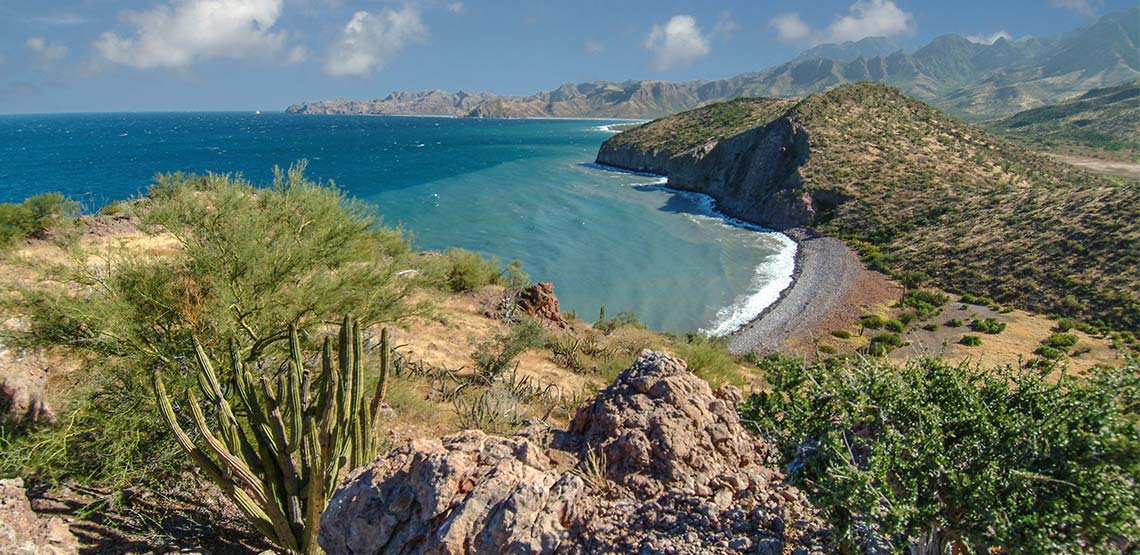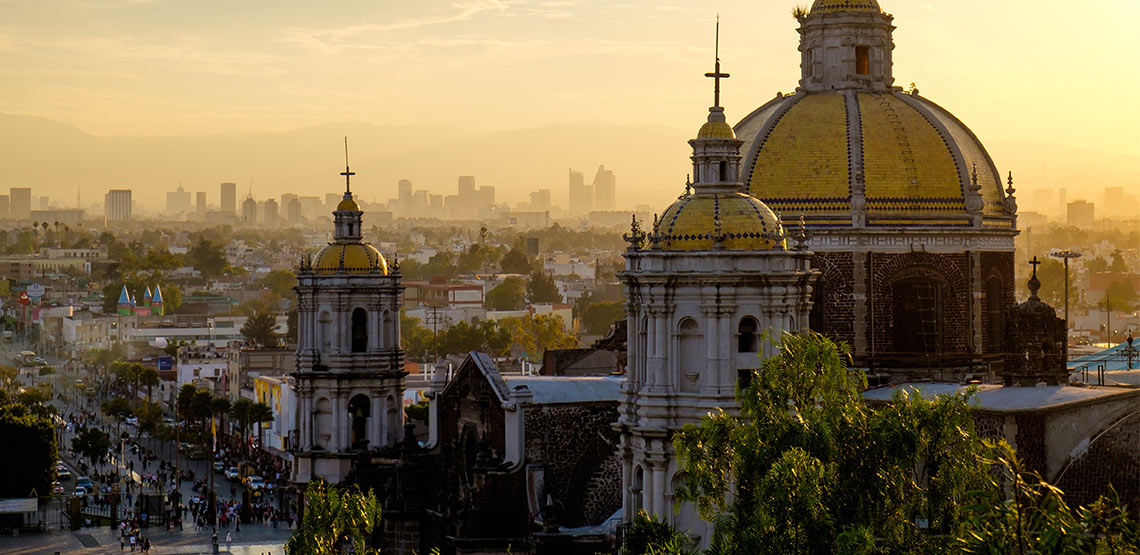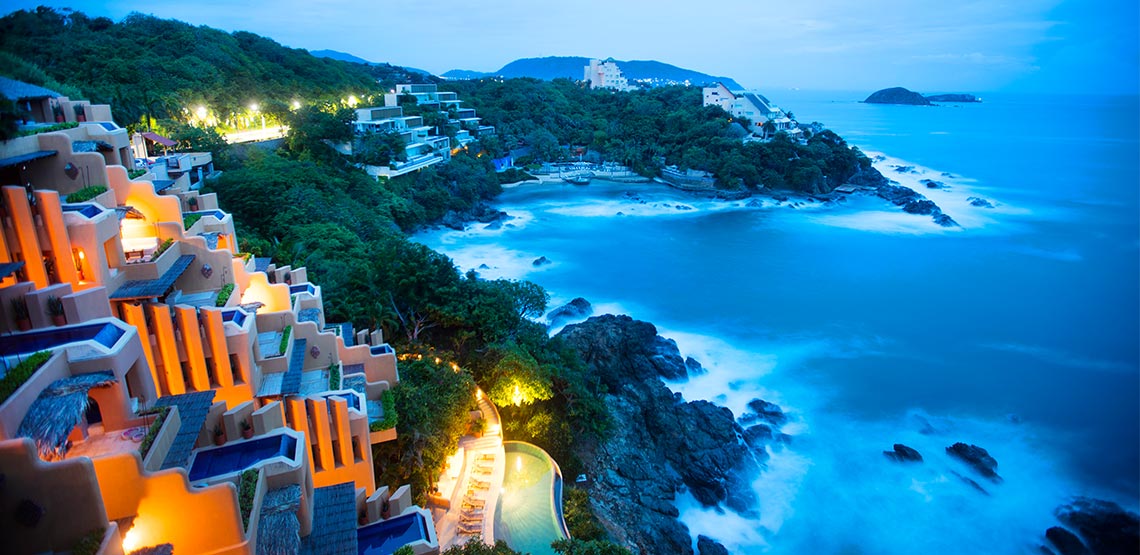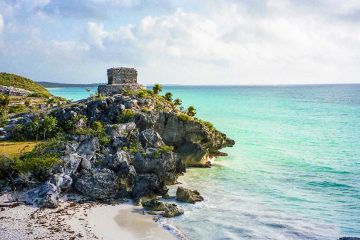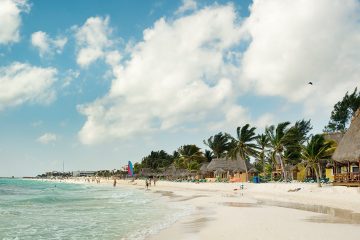Mexico Travel Guide: From Stunning Beaches to Bustling Cities
Find Your Perfect Vacation
From its Mesoamerican pyramids to its stunning beaches to its exciting nature reserves, Mexico has a plethora of attractions for all kinds of travelers. Most tourists come for the country’s beach towns, but colonial cities like Campeche, Guanajuato and Mexico City have a rich cultural history with distinction as UNESCO World Heritage Sites.
Architecture and art are huge draws in the country’s major cities, including multi-day celebrations like the Festival de México. Regardless of why you’re making plans to travel to Mexico, one thing’s for sure: no matter where you go, there’s always good food and an afternoon siesta waiting for you.
What to Expect
In the past you could just show a U.S. Government issued ID and a birth certificate, but now you need a passport to travel in and out of Mexico. If you intend on crossing the border from California or Texas, you’ll also need to purchase a Mexico Tourist Card, also called an FMM (Forma Migratoria Múltiple).
Keep this tourist card, along with your passport, on you at all times. Flights to Mexico will also require you to fill out one of these cards to pass through customs.
Mexico uses the peso as its standard form of currency. Currently, the exchange rate is about 20 pesos per U.S. dollar, which makes it relatively cheap for a visit. Meals range from a few dollars for a “comida corrida,” a midday three-course meal from tiny local restaurants, to about $20 to $50 USD per person for fine dining with drinks.
Admission to large museums and national galleries, like you’d find in Mexico City, only cost about $4 USD per person. Even zoos range from free admission to around $13 USD for the most all-inclusive ticket. You can easily get by on around $40 USD per day, not including lodging.
A large portion of the Mexican economy is sustained via tourism, so you’ll find most places do a good job of accommodating visitors.
Culture
Mexico has a past that is rich in tradition and places a large emphasis on the family. Mexicans also value being hospitable and making guests feel welcome, which is why it’s so important to be familiar with proper Mexican etiquette when you travel there. The last thing you want is to offend someone who is trying to be welcoming to you.
Be sure to familiarize yourself with common customs before you go. For example, you should use formal greetings when addressing locals for the first time — stick with Senor or Senora plus their last name.
Don’t let their adherence to tradition make you think Mexicans are uptight, however. When it comes to homosexual travelers, Mexicans are quite liberal and welcoming. You can find gay dance clubs and gay beaches in Puerto Vallarta. Cancun, Loreto and Cabo also make for great gay travel destinations.
A great way to experience Mexican culture is to visit during a national holiday. Obvious choices include Cinco de Mayo and Day of the Dead, but Christmas is also a wonderful time to witness some festive Mexican traditions.
Types of Accommodations
Given its number of historical sites and outdoor activities, Mexico attracts a lot of backpackers. Youth hostels are common throughout the country and are extremely affordable. Dorm-style beds can run as little as $5 to $10 USD a night; even private rooms are around $25 USD per person whether inland or by the beach.
Two- and three-star hotels abound across Mexico, which aren’t that much more expensive than a hostel, even along the beaches. Families will find these options to be the most affordable as most budget hotels have family-style rooms, although some have shared bathrooms like hostels.
Five-star beach resorts are also found all along the coast. Prices here average between $300 to $500 USD a night, but some luxury facilities charge up to $1,100 USD per night. Many are adults-only, however, so they may not be an option if you’re traveling with children. Couples, on the other hand, will get spoiled rotten at these resorts, which are usually all-inclusive.
Room service, multiple onsite restaurants, spa facilities and pools are at your fingertips here. You can find family resorts across the country as well, which provide kids’ programming and family-oriented excursions and activities.
Health & Safety
While the media sometimes blows things out of proportion, caution should be exercised when traveling to Mexico. Drug cartel and gang violence has increased in the last year, especially in the northern states. When possible, stay off the roads at night, use common sense and defer non-essential travel from these areas.
A full list of advisories for U.S. citizens is available on the U.S. Department of State’s international travel website.
Certain travel vaccinations are recommended for travelers coming into Mexico. Both Hepatitis A and typhoid are transmittable through contaminated food and water. Traveler’s diarrhea or “Montezuma’s revenge” has also been reported in the poorer parts of Mexico, so consumption of bottled water is recommended over tap.
Always use bug spray when spending extended periods of time outdoors, as cases of both the Zika and West Nile virus have been reported within the more tropical regions of Mexico.
Regions of Mexico
While Mexico is only about a fifth of the size of the United States, that still makes it a relatively large country in relation to many others. At nearly 2 million square kilometers, Mexico has a larger surface area than all of Europe.
Because of its size, the country is separated into different regions. These are the most popular areas for tourists visiting Mexico:
Baja California
Bordering the United States directly under San Diego, CA lies the western peninsula of Mexico — Baja California. Most people are familiar with Mexico because of the proximity of this tourist area, primarily the city of Tijuana. Souvenir shops abound here and locals sell handmade items on the street.
The beach towns of Rosarito, Ensenada and La Paz have also become nightlife destinations for U.S. citizens looking to party cheaply, and relatively close to home. However, Cabo San Lucas, located at the tip of the peninsula, consistently ranks as a top resort town in Mexico, with many five-star accommodations in the area.
You can get to the region’s most famous landmark, El Arco, by water taxi or kayak.
Central Mexico
Previously home to famous artists and filmmakers like Frida Kahlo and Alfonso Cuaron, Central Mexico has defined itself as the cultural and historical heart of the country. Mexico’s capital, Mexico City, remains one of the most densely populated and frequently visited areas.
Full of towering churches and bustling marketplaces, Mexico City and other nearby colonial cities still maintain much of their old world charm. Of the many beautiful locales, Puebla and Toluca in particular have evolved into rich cultural destinations, full of art museums and world-renowned gastronomy.
If you're looking to partake in some of the best St. Patrick's Day celebrations in Ireland, look no further than these five towns.
Pacific Coast
From Puerto Vallarta to Chiapas, the Pacific Coast of Mexico has been a favorite vacation destination for tourists since the 1950s. Leisure reigns here, where beach-going is a way of life. United States- and United Kingdom-based tourists flock to Puerto Vallarta for its eco-tourism and luxury hotel chains.
Although Acapulco has traditionally been a favorite escape off the Pacific Coast, tourists should steer clear of the beach town nowadays, which has become Mexico’s murder capital from gang violence. A far safer bet would be the beach towns of Ixtapa and Zihuatanejo, where you can take fishing cruises, swim with dolphins or golf to your heart’s content.
If history is more your thing, you can also find many Zapotec and Mayan archaeological sites to explore across the Oaxacan and Chiapas regions.
Yucatan Peninsula
Known as the hotbed of Mexican tourism, the Yucatan Peninsula is where you’ll find spring break destinations like Cancún, Playa del Carmen, Tulum and Campeche. Snorkeling and other eco-friendly water sports are popular activities as the second largest barrier reef in the world is located off the coast of the Yucatan.
Aside from turquoise water and gorgeous white-sand beaches, there’s no shortage of lush national parks and fascinating Aztec and Mayan ruins here. Beach cities in the Yucatan are known for their lazy days and steamy nights, with nightclubs and festivals running into the wee hours of the morning.
Transportation
When it comes to getting to your destination, most Mexico flights go to the popular resort towns and big cities such as Mexico City, Cancun, Puerto Vallarta, Guadalajara and La Paz. From there you can rent a car or take public transportation. In terms of Mexico transportation, many sites warn against renting a car due to safety concerns.
However, the same advice for renting a car in any foreign country applies here: familiarize yourself with any differences in traffic laws and signs and you should have no problem driving in Mexico. The one thing you should watch out for is the cost — many rental companies advertise a deceivingly low rate online, only to tack on fees upon your arrival. Most rental companies in Mexico require you to purchase basic liability insurance, which will instantly rack up the cost.
If you don’t need to rent a vehicle, taking a bus, taxi or using the metro are also viable options. Just be prepared when using public transportation as it tends to be busy during rush hour in big cities. You should also never ride in a taxi that is unlicensed.
When to Go
Temperatures across Mexico vary depending on what part of the country you’re visiting. Inland destinations like Mexico City are generally pleasant year-round. Average temperatures are in the mid-60s to 70s, occasionally reaching 80 degrees in June and July. High season tends to fall from December through April across the country, especially along the coast.
Let’s put it this way: regardless of what time you are visiting, you should be safe packing clothes such as sundresses, shorts, t-shirts and swimsuits.
In general, coastal cities are more pleasant from fall to spring, but the early fall months are also part of Mexico’s rainy season. Make sure to do some research beforehand to determine what the weather has historically been like for a particular region before booking. Cities on the eastern coast are prone to tropical storms and hurricanes from June to November.

